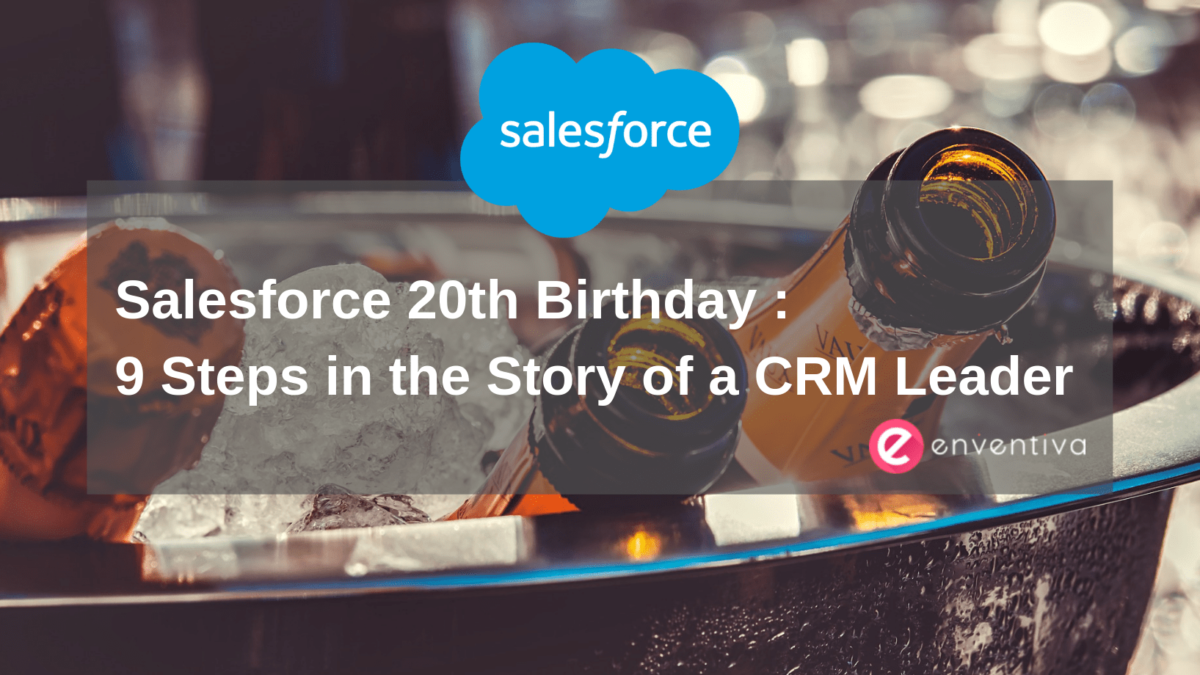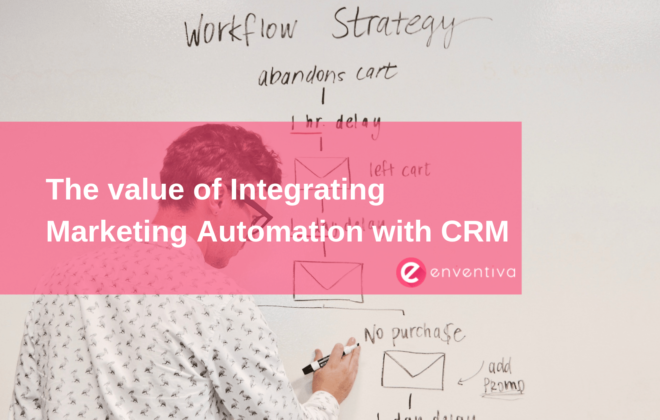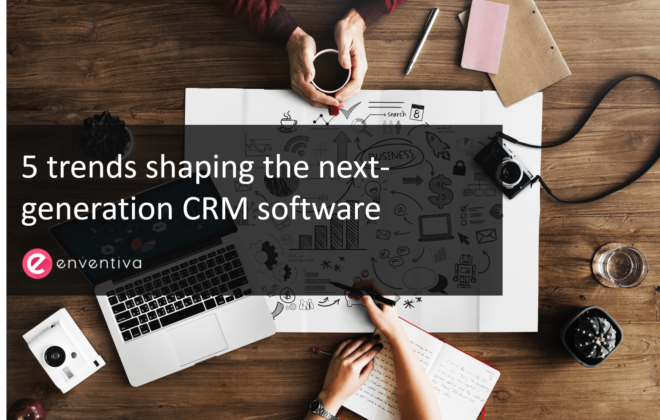Salesforce 20th Birthday : 9 Key Steps Behind the Success of the CRM Leader
This month, Salesforce celebrates its 20th anniversary. For this special occasion, Enventiva has chosen to highlight 9 key steps which have made Salesforce the successful leader of CRM that we know today.
1999 – Marc Benioff, A Visionary for the SaaS Industry
In February 1999, Marc Benioff, who has previously worked at Oracle, founded Salesforce with three developers, Parker Harris, Dave Moellenhoff, and Frank Dominguez. Since the beginning, his idea was to create a company that will sell Software-as-a-Service (SaaS). What could appear as an audacious bet at the time has now proven its strong value for customers all over the world.
2003 – Dreamforce, Sharing Innovation With Customers
In 2003, Salesforce organized its first users’ conference, called Dreamforce. The event gathered approximately 1300 attendees. Today, each Dreamforce conference is a big industry show which brings together more than 100 000 people. This huge success has two reasons : first, Dreamforce is the place to be if you want to get premiere information on the latest innovations of Salesforce. Second, the software vendor has a customer-centric DNA, and the event reflects this strong relationship. Like Parker Harris said, “as a customer company, we continue to be inspired by customers who use our services to radically change how they do business, and we continue to deliver new products based on their feedback and needs.“
2004 – Testing Its Business Model Through Nasdaq Introduction
Since June 2004, Salesforce is listed on the New York Stock Exchange, under the symbol CRM. Back then, industry analysts saw this IPO as a way to test a new business model, one “that could shake up the software industry”.
2008 – Entering the Service Desk
Salesforce has started to extend its offering, in order to cover the full customer-relationship lifecycle. The acquisition of InStranet, a provider of a knowledge management solution dedicated to call centers, is a first step into the Service Desk area. Since then, the product has become the foundation for the Service Cloud solution.
2012 – The Year of Consecration for Cloud-based Solutions
In 2012, according to Gartner, Salesforce became the first vendor of the CRM market, with a total revenue of 2,5 billion US dollars. The CRM pure-player company surpassed two software giants, SAP and Oracle. Marc Benioff’s vision is now taking shape : cloud adoption is growing fast, and SaaS software is promised to a brilliant future.
2013 – Marketing Automation Added to the Portfolio, Cloud Unification Begins
2013 is an important year for Salesforce. In June, the software vendor bought ExactTarget, editor of Pardot solution, for the record amount of 2,5 billion US dollars. With this big acquisition, the company earned powerful marketing automation features. Today, Pardot is natively embedded into Salesforce platform, in which it constitutes the B2B marketing solution.
The same year, the company unveiled Salesforce1, a platform that unites its SaaS and PaaS solutions. After an intensive phase of acquisitions, the company started to bring everything together, in order to deliver a fluent and seamless experience to its customers.
2015 – Reinventing the User’s Experience
In 2015, the successor of Salesforce1, Lightning, is released. This new platform marks a clear step toward mobility and customer experience, with a totally reimagined user interface, designed to enhance productivity. Lightning also makes the development of Salesforce-based apps easier, thanks to many new features and components.
2016 – Increasing the Value for Customers With Artificial Intelligence and E-commerce
In 2016, Salesforce officially introduced Einstein, its Artificial Intelligence (AI) technology. Through automated machine learning, it leverages all the data available into Salesforce platform and uses it to deliver valuable insights to the users. With it, predictive analysis features are embedded into the various solutions. Sales representatives, Service Desk and Marketing users can use it to identify the best opportunities, to prioritize actions and to better understand the customers and prospects behaviors.
2016 was also the year of another big acquisition for the vendor: Salesforce bought Demandware, an e-commerce cloud platform for B2C markets, for 2,8 billion US dollars. The solution supplements Salesforce’s Customer Success Platform with mass-market sales capabilities. For the customers, this is a strategic component to manage the full sales B2C pipeline.
2018 – Salesforce Enforces Its Multi-cloud Strategy With Mulesoft Acquisition
In March 2018, Salesforce announced the acquisition of Mulesoft, a provider of an Integration Platform as-a-Service (iPaaS) and API Management solution, for 5,9 billion US dollars. This is the biggest external growth operation for the company. Mulesoft acquisition will enhance Salesforce integration capabilities. It is a key asset for the company multi-cloud strategy, that will allow customers to easily integrate Salesforce cloud with third-party cloud platforms.






